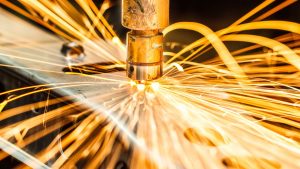
Fasteners play a crucial role in the development of new technologies and are often used in contexts that require exposure to high temperatures, such as the automotive and energy industries. Designing fastening solutions capable of withstanding extreme heat is very complex and requires extensive testing and research to identify the best material.
Fasteners and high temperatures: the major risks
First of all, you must be aware of the different issues that high-temperature fasteners are likely to experience. Non-experts might think that melting is the main problem for metal fasteners, but this occurs only at temperatures above 1,000 Fahrenheit (538° C). In the case of metals, one of the most common effects is oxidation, i.e. the chemical reaction that accelerates corrosion and rusting caused by extreme heat.
Other rather common risks are:
- Corrosion. There are several types; it generally occurs due to a chemical attack by gases, molten metals, or salts.
- Weakening of material strength. Metal weakens and becomes more ductile at high temperatures; conversely, extremely low temperatures increase its brittleness. In other words, heat makes the material more susceptible to fracture under stress during prolonged use.
- Expansion and contraction. High temperatures can cause metal fasteners to expand, increasing the pressure on the holes in which they are installed. As the metal cools, the fastener contracts and experiences loosening. This can be a very serious problem when fasteners are used inside machines that develop high temperatures but cools when not in use. For such machinery, manufacturers must provide solutions that can withstand extreme heat and cooling without being damaged.
Once you are aware of the risks associated with high temperatures, you need to carefully assess the environment in which you are operating, asking yourself a series of questions:
- To what temperatures will the fasteners be exposed?
- How long will they have to withstand such temperatures?
- Is the application subject to vibration or other stresses that can cause loosening?
- Is it a high-risk environment for corrosion?
The best materials for high-temperature fastening
The second step is the choice of material. Focusing on metal alloys, let’s see which materials are best suited to make fasteners capable of withstanding high temperatures:
- Nickel alloys. These types of alloys tend to show greater resistance to oxidation than other materials. The ideal temperature range for this type of fastener is 1,300 to 1,800 degrees Fahrenheit (704° to 982° C).
- Stainless steel 309 and 310, which contain more chromium and nickel than other alloys. In particular, stainless steel 310 provides exceptional resistance to corrosion, even in saline environments.
- Stainless steel 630. This alloy characterized by extreme hardness, strength, and ductility is ideal for fastening at high temperatures.
Specialinsert® solutions for high temperatures
One of the most innovative fastening systems designed by Specialinsert® is FILTEC®, a thread reported used to produce or regenerate threaded seats subjected to high dynamic loads, vibration, and shock, even at high temperatures. This solution is suitable for frequent screwing and environments subject to corrosion.
Heat resistance with peaks up to 750°C makes FILTEC® an ideal choice for the aviation, space, automotive, and energy industries. The product is available in Inconel® X750 material or Nimonic® 90 material for higher temperatures.
Want to know more about Specialinsert® fasteners for high-temperature applications? Contact our sales assistance: our experts will help you select the most suitable product according to the characteristics and environmental conditions of your project.
